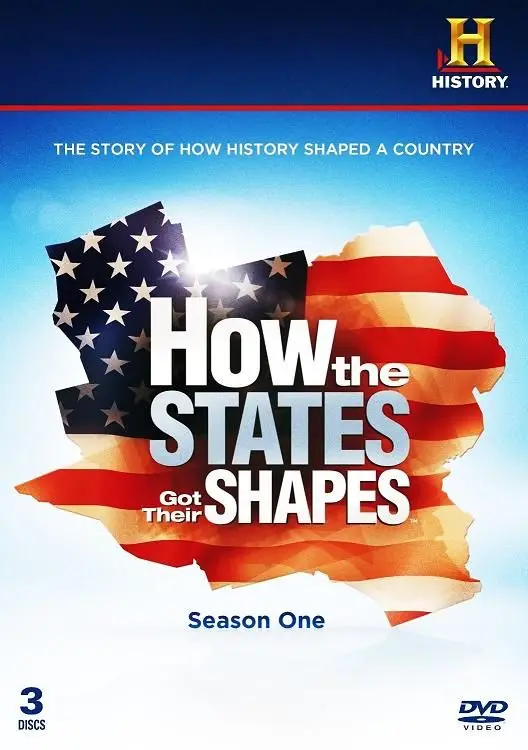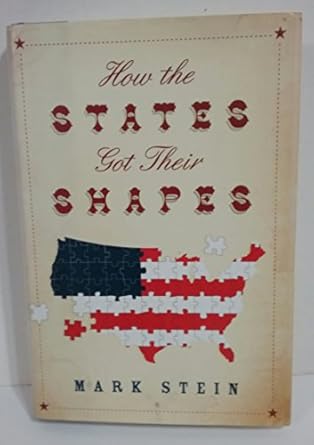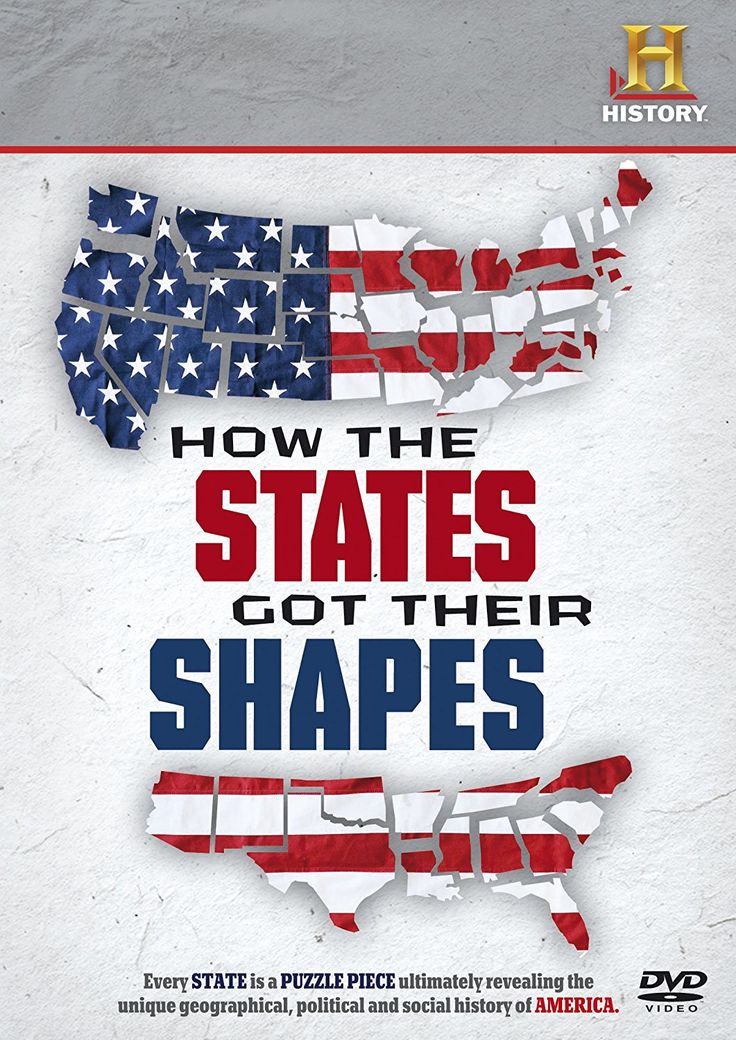Ever wondered how the borders of the states in the U.S. came to be? The shapes of the states are not just random; they tell fascinating stories of history, culture, and geography. “How the States Got Their Shapes” is a captivating exploration of these stories, shedding light on the quirky and often surprising reasons behind the unique outlines of each state. From historical treaties to geographical features, understanding state shapes offers a glimpse into the very fabric of America.
Overview of the Documentary

The documentary "How the States Got Their Shapes," hosted by the charismatic Brian Unger, takes viewers on a remarkable journey across the United States, unraveling the intriguing tales behind state boundaries. It’s not just about lines on a map; it’s a blend of history, geography, and a little bit of humor. Here are some key points that define this engaging documentary:
- Historical Context: The documentary dives deep into the historical decisions and events that led to the formation of state borders. For instance, did you know that some states were created based on the outcomes of wars or negotiations?
- Geographical Influences: Geographic features like rivers, mountains, and lakes often played a crucial role in delineating state lines. The documentary illustrates how natural landscapes shaped the political map.
- Cultural Factors: The cultural identities of different regions also influenced state shapes. Some borders reflect the presence of specific communities or ethnic groups, showcasing the cultural tapestry of the nation.
- Political Decisions: The documentary highlights how political maneuvering has historically affected state boundaries. For example, the creation of West Virginia was a direct result of the Civil War divisions.
Overall, “How the States Got Their Shapes” is a delightful mix of storytelling and education, making it a must-watch for anyone curious about the quirks of American geography.
Also Read This: How to Change Background in Adobe Photoshop CS6 Easy Steps to Follow
The Historical Context of State Shapes

Understanding how the United States came to be shaped the way it is involves diving into a rich tapestry of historical events, treaties, and geographical considerations. The shapes of states often reflect the complex history of territorial disputes, colonial claims, and the vision of early American leaders.
Initially, land was divided based on natural features like rivers and mountains. As settlers moved westward, they brought with them preconceived notions of what land should look like. This led to some quirky shapes; for instance, Colorado's rectangular borders stem from the public land survey system established after the Revolutionary War.
In many cases, state shapes were influenced by political decisions. For example:
- The Missouri Compromise (1820): This agreement aimed to maintain the balance between free and slave states, leading to the formation of states like Arkansas and Missouri with their unique shapes.
- The Kansas-Nebraska Act (1854): This act allowed new territories to decide the slavery issue, shaping states based on political ideology as much as geography.
- Colonial Land Grants: Colonial powers such as Spain and England often laid claim to vast areas, which later evolved into the distinct shapes we see today.
Additionally, certain states, like Texas, stand out due to their unique border disputes and annexation history. The formation of state shapes is not just an academic subject; it reflects a fascinating blend of culture, conflict, and collaboration that has defined the nation.
Also Read This: The Popularity of YouTube vs Dailymotion Key Differences and User Preferences
Key Figures and Events Featured

Throughout the history of American state formation, several key figures and events have played pivotal roles in shaping the borders and identities of the states. Understanding these personalities and moments gives us a clearer picture of how state shapes evolved.
Key Figures:
- Thomas Jefferson: As a proponent of westward expansion, Jefferson's vision included the Louisiana Purchase, which doubled the size of the nation and influenced the shapes of numerous states.
- James Madison: Madison's role in drafting the Northwest Ordinance of 1787 helped establish guidelines for new states, influencing their shapes and governance.
- Stephen A. Douglas: Known for his role in the Kansas-Nebraska Act, Douglas significantly impacted how territories were defined and organized, leading to the formation of states with intricate shapes.
Key Events:
| Event | Year | Impact on State Shapes |
|---|---|---|
| Missouri Compromise | 1820 | Maintained the balance between free and slave states, influencing borders. |
| Louisiana Purchase | 1803 | Dramatically expanded U.S. territory, leading to new state formations. |
| Northwest Ordinance | 1787 | Established a framework for the creation of new states in the Northwest Territory. |
These figures and events showcase the interplay of vision, ambition, and political negotiation that ultimately shaped the United States. Understanding them gives us a richer appreciation of why our states look the way they do today.
Also Read This: How to Cover Your Face with a Scarf Stylish Tips Featured on Dailymotion
Why State Shapes Matter
State shapes may seem like a trivial detail, but they play a critical role in numerous aspects of our lives. From political representation to economic development, the contours of a state can significantly influence its identity and functionality.
First off, let's talk about geography. The shape of a state can determine its natural resources, climate, and even the population distribution. For example, states like Texas, with its vast area, have a diverse range of environments and resources, from deserts to forests. In contrast, a smaller state like Rhode Island has limited resources but a high population density, impacting everything from housing to transportation.
Moreover, state shapes play a role in political representation. Irregular borders can lead to gerrymandering, where district lines are manipulated to favor one political party over another. This can dilute the voting power of certain communities, leading to significant implications during elections.
Finally, state shapes can influence cultural identity. Consider how the distinct shapes of states like Florida, shaped like a peninsula, or Colorado, with its square edges, contribute to their unique cultural narratives. This shape can also affect tourism, as states with more recognizable forms often become iconic in the minds of travelers.
In essence, understanding why state shapes matter gives us insight into the complexities of governance, culture, and community. A seemingly simple outline can impact everything from resources and representation to identity and tourism.
Also Read This: Is Dailymotion Down Today
Where to Watch the Documentary
If you’re intrigued by the intricate stories behind how states got their shapes, there’s a fascinating documentary you won’t want to miss! "How the States Got Their Shapes" is available on several platforms, making it easy for you to dive into this captivating exploration.
- Streaming Services: Check platforms like Amazon Prime Video and Hulu. They often have the documentary available for streaming, either as part of their subscription or for rent.
- DVD Purchase: For those who prefer physical media, you can purchase the DVD from retailers like Amazon or Walmart. This way, you can have it on hand for repeat viewings!
- Public Libraries: Don’t forget to check your local library! Many libraries have extensive collections of documentaries and you might find this one available for borrowing.
Make sure to grab some popcorn and settle in for an engaging experience! The documentary not only entertains but also educates, providing a deeper understanding of the geographic and historical influences that shape our states today.
How the States Got Their Shapes
The unique shapes of U.S. states result from a complex interplay of historical, geographical, and political factors. Each state’s outline tells a story that reflects its past, resources, and settlement patterns. Here are some key influences on how states acquired their distinct shapes:
- Geographical Features: Natural landmarks such as rivers, mountains, and lakes often formed boundaries. For example, the Mississippi River significantly influences the borders of several states.
- Colonial Claims: Early European settlers laid claims to land, which often resulted in irregular shapes. States like Pennsylvania were influenced by land grants that didn't adhere to a grid pattern.
- Political Negotiations: Many borders were drawn through political agreements and compromises, such as the Missouri Compromise, which shaped the states in the Midwest.
- Surveying Techniques: The introduction of surveying tools in the 19th century led to the creation of rectangular states like Kansas and Nebraska, which were designed to fit the grid pattern.
| State | Shape Influence |
|---|---|
| Texas | Geographical features and historical land grants |
| Florida | Peninsular geography |
| Wyoming | Rectangular shape due to surveying |
Understanding how states got their shapes reveals much about American history and territorial expansion. The borders we see today are a result of various cultural, environmental, and political factors, making each state unique in its identity.
 admin
admin








